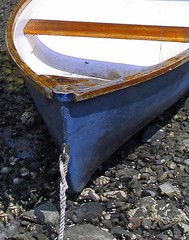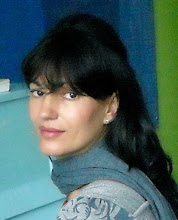Monday, 24 November 2025
Sunday, 22 October 2023
PLOSIVE STORY /p/ /b/ /t/ /d/ /k/ /g/

A stop, plosive, or occlusive is a consonant sound produced by stopping the airflow in the vocal tract.
- Use the consonant chart on the right to hear and repeat each one of these plosive consonant phonemes /p/ /b/ /t/ /d/ /k/ /g/ in isolation as many times as you need to. To help you produce the sounds correctly, place a sheet of paper in front of you, you will probably notice that the paper moves (if you do it properly) as the air streem is released in the manner of a mini-explosion. Keep trying until the paper moves, it should move more with the voiceless consonants /p/ /t/ /k/ than with the voiced equivalents /b/ /d/ /g/.

- You can now listen to the song The story composed by Brandi Carlile.Pay special attention to the pronunciation of plosive consonants. Once you have finished listening, you can do the matching activity just underneath the video. If you want to see the lyrics as you listen, click on this link: version with the lyrics superimposed on the video.
- Do this matching puzzle activity for more practice of -ed form.
- For more listening practice on pronunciation of -ed regular past verbs, click here.
Labels:
/b/,
/d/,
/g/,
/k/,
/p/,
/t/,
charts,
consonants,
elementary,
intermediate,
matching activities,
plosives,
songs,
videos
Sunday, 1 October 2023
VIVA LA VI DA. VOWELS /iː/ /ɪ/ /ʊ/ /uː/ /e/ /ɜː/ /ɔː/ /æ/ /ʌ/ /ɑː/ /ɒ/
This post has been designed principally for Spanish speakers, but it can also be useful for other nationalities by skipping the first activity and doing the rest.
There are 46 sounds in the English sound system, 22 of which are vowel sounds. Compare this with Spanish, which has 5 vowel sounds, none of which are equivalent to any vowel sound in English. English vowels are difficult to identify and produce in most latin based languages.

The British band Cold Play will help to introduce some of the most confusing vowels /iː/ /ɪ/ /ʊ/ /uː/ /e/ /ɜː/ /ɔː/ /æ/ /ʌ/ /ɑː/ /ɒ/ with their song Viva la vida.
There are 46 sounds in the English sound system, 22 of which are vowel sounds. Compare this with Spanish, which has 5 vowel sounds, none of which are equivalent to any vowel sound in English. English vowels are difficult to identify and produce in most latin based languages.
- First of all, note where the vowel chart is placed in the mouth cavity (Fig B) and then observe where each vowel is produced (Fig A) . Click on the chart on the right to hear and repeat the following vowel sounds /iː/ /ɪ/ /ʊ/ /uː/ /e/ /ɜː/ /ɔː/ /æ/ /ʌ/ /ɑː/ /ɒ/ as many times as you need to.

The British band Cold Play will help to introduce some of the most confusing vowels /iː/ /ɪ/ /ʊ/ /uː/ /e/ /ɜː/ /ɔː/ /æ/ /ʌ/ /ɑː/ /ɒ/ with their song Viva la vida.
- Listen to the song and do the matching exercise by dragging the words taken from the song on the right to the corresponding vowel sound they contain, on the left. Only one answer can be correct.
- For more practice with vowel sounds.
Labels:
/æ/,
/ɑ:/,
/ɒ/,
/e/,
/ɜ:/,
/i:/,
/ɪ/,
/ɔ:/,
/u:/,
/ʊ/,
/ʌ/,
charts,
elementary,
intermediate,
long vowels,
matching activities,
short vowels,
songs,
videos,
vowels
Sunday, 23 April 2023
MORNING SUN. LONG VOWELS /ɑ:/ /ɜ:/ /ɪ:/ /ɔ:/ /u:/
 Listen to British singer Robbie William's song Morning sun. As you are listening, try to locate the words containing long vowel sounds /ɑ:/ /ɜ:/ /i:/ /ɔ:/ /u:/
Listen to British singer Robbie William's song Morning sun. As you are listening, try to locate the words containing long vowel sounds /ɑ:/ /ɜ:/ /i:/ /ɔ:/ /u:/
- Then do the crossword exercise with the transcribed words given. The words are taken from the song lyrics. To see the words, scroll down the crossword bar.
- Listen now to this version with lyrics.
- More on long vowel sounds.
Labels:
/ɑ:/,
/ɜ:/,
/i:/,
/ɔ:/,
/u:/,
advanced,
crosswords,
intermediate,
long vowels,
phonetics,
songs,
videos,
vowels
Monday, 20 March 2023
IF YOU WERE A SAILBOAT. CONDITIONAL SONG. Vowels and diphthongs
The song If you were a sailboat composed and interpreted by the Georgian-British singer, songwriter and musician Katie Melua, will help us this time to sail through vowels /ɪ/ /ɪː/ /ʌ/ /ɑː/ /ɒ/ /ɔ:/ /ʊ/ /uː/, diphthongs /aɪ/ /eɪ/ /aʊ/ and conditional sentences.
This post has been inspired by the work of the English teacher José Álvaro Álvaro, who participated in the course Phonetics Through Songs and the programme PhoTransEdit, used for the transcriptions in the matching activity.
This post has been inspired by the work of the English teacher José Álvaro Álvaro, who participated in the course Phonetics Through Songs and the programme PhoTransEdit, used for the transcriptions in the matching activity.
- A gap-fill activity designed for elementary and intermediate students. Listen to the song and fill in the gaps using the "Clue" button, where the missing word is transcribed.
- A matching activity directed at upper-intermediate and advanced students. Once you've listened to the song and completed the gap-fill activity, try to remember the lyrics and match the transcribed main clauses on the left with the conditional clauses on the right.
- Listen now to the official version of he same song and an alternative version with different lyrics. Can you spot the differences?
- For practice on conditional sentences, click here.
Wednesday, 8 March 2023
CHASING PIRATES. DIPHTHONGS /eɪ/ /aɪ/ /əʊ/ /aʊ/
 Norah Jones' swirling singing will, this time, take us into the slippery world of some diphthongs /eɪ/ /aɪ/ /əʊ/ /aʊ/ (phonemically analyzed as a sequence of a semivowel and a monophthong) with her song Chasing pirates.
Norah Jones' swirling singing will, this time, take us into the slippery world of some diphthongs /eɪ/ /aɪ/ /əʊ/ /aʊ/ (phonemically analyzed as a sequence of a semivowel and a monophthong) with her song Chasing pirates. WARNING: don’t confuse /əʊ/ and /aʊ/ (they are often mixed up!). Click first on the phonetic chart on the right to hear the difference.
I have to admit I chose this song because I like it, nevertheless, it does serve the purpose of showing the difference between these very diphthongs. American English is commonly described as having wide diphthongs, made with less oral tension. This is quite evident in the song where the singer (born in New York) makes little distinction between /əʊ/ /aʊ/, but she does make it.
Native-Burmese speakers find it almost impossible to pronounce diphthongs and triphthongs. The same is true of native-Caribbean speakers.
Listen to the song and fill in the gaps
For further practice with diphthongs, try this game
Sunday, 15 January 2023
FRICATIVE LOVE. SHE /f/ /v/ /θ/ /ð/ /s/ /z/ /ʃ/ /ʒ/ /h/ /r/
Fricative consonants are produced by forcing air through a narrow channel made by placing two articulators close together which produces friction, this air flow is called frication. Click on each of these fricative consonants /f/ /v/ /θ/ /ð/ /s/ /z/ /ʃ/ /ʒ/ /h/ /r/ in the chart on the right and repeat these sounds as many times as you need to.The fricative song She, well-known thanks to the film Notting Hill, starring Julia Roberts and Hugh Grant, sung by Elvis Costello, was, however, composed by the Armenian Charles Aznavour, who made it number one in England in 1974.
- Listen to the song on this video and do the gap-fill activity just underneath by typing the missing words as you listen.
- Once finished you can do the following crossword activity with words taken from the lyrics.
- Compare Elvis Costello's She from the film Notting Hill to Charles Aznavour's original version. Which version do you prefer?
- Try to imagine the story of the two people featured in the video posted on this page.
Labels:
/ð/,
/f/,
/h/,
/r/,
/s/,
/ʃ/,
/v/,
/z/,
/ʒ/,
/θ/,
advanced,
consonants,
crosswords,
fricatives,
gap fill,
intermediate,
phonetics,
songs,
videos
Subscribe to:
Comments (Atom)





